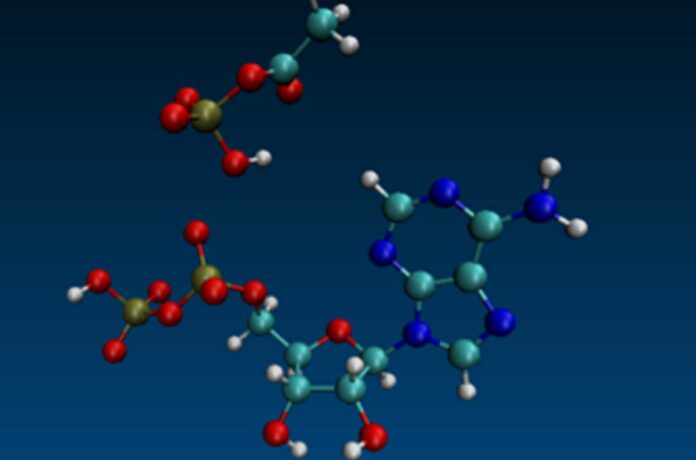All cells use ATP, adenosine triphosphate, as an energy intermediary. During cellular respiration, energy is stored when phosphate is added to ADP (adenosine diphosphate) to make ATP. When that phosphate is broken, energy is released to power most of the functions of a cell.
But creating ATP’s complex chemical structure from scratch is energy-intensive and requires six distinct ATP-driven moves; while convincing models do make it possible for prebiotic formation of the ATP skeleton without energy from already-formed ATP, they also suggest that ATP was likely scarce and that another compound may have played a central role in the conversion of ADP to ADP during this stage of evolution.
According to a recent study by Nick Lane and colleagues at University College London, UK, a straightforward two-carbon molecule may have been a key participant in the evolution of metabolism before the appearance of cells. The discovery may shed light on the earliest phases of prebiotic biochemistry and offer an explanation for how ATP came to be the common energy source for all living things in cells today.
All cells use ATP, or adenosine triphosphate, as a source of energy.
During cellular respiration, energy is stored when a phosphate is added to ADP (adenosine diphosphate) to make ATP. When that phosphate is broken, energy is released to power most of the functions of a cell.
While convincing models do allow for prebiotic formation of the ATP skeleton without energy from already-formed ATP, they also suggest ATP was likely quite scarce and that some other compound may have played a key role in conversion of ADP to ADP at this stage of evolution. However, building ATP’s complex chemical structure from scratch is energy intensive and requires six separate ATP-driven steps.
Acetyl phosphate (AcP), a two-carbon molecule that currently serves as a metabolic intermediary in both bacteria and archaea, was regarded by Lane and colleagues as the most likely option.
After the discovery that AcP can convert ADP to ATP in the presence of iron ions, many unanswered questions remained, such as whether other small molecules might also be effective, whether AcP is specific for ADP or whether it could also convert the diphosphates of other nucleosides (such as guanosine or cytosine), and whether iron is the only catalyst that can catalyze ADP phosphorylation in water.
The authors looked into each of these issues in their most recent study.
They investigated the ability of various ions and minerals to catalyze ATP synthesis in water; none were even close to as effective as iron, based on evidence and speculations about the chemical state of the Earth before life originated.
They next put a panel of several tiny organic molecules to the test to see how well they could phosphorylate ADP; none were as successful as AcP, and only one other compound (carbamoyl phosphate) shown any appreciable activity.
They concluded by demonstrating that none of the other nucleoside diphosphates took a phosphate from AcP.
The authors propose a mechanistic explanation for the specificity of the ADP/AcP/iron reaction using these findings in conjunction with molecular-dynamic modeling. They theorize that the iron ion’s small diameter and high charge density, as well as the conformation of the intermediate formed when the three come together, provide the “just right” geometry that enables AcP’s phosphate to switch partners and form ATP.
“Our results suggest that AcP is the most plausible precursor to ATP as a biological phosphorylator,” Lane adds, “and that the emergence of ATP as the universal energy currency of the cell was not the result of a ‘frozen accident,’ but arose from the unique interactions of ADP and AcP. Over time, with the emergence of suitable catalysts, ATP could eventually displace AcP as a ubiquitous phosphate donor, and promote the polymerization of amino acids and nucleotides to form RNA, DNA and proteins.”
“ATP is so central to metabolism that I thought it might be possible to form it from ADP under prebiotic conditions,” adds lead author Silvana Pinna, “But I also thought that several phosphorylating agents and metal ion catalysts would work, especially those conserved in life. It was very surprising to discover the reaction is so selective – in the metal ion, phosphate donor, and substrate – with molecules that life still uses. The fact that this happens best in water under mild, life-compatible conditions is really quite significant for the origin of life.”
Source: 10.1371/journal.pbio.3001437
Image Credit: Aaron Halpern, UCL (CC-BY 4.0, https://creativecommons.org/licenses/by/4.0/)
You were reading: How Adenosine Triphosphate Became Universal Energy Carrier Of All Cellular Life Today
